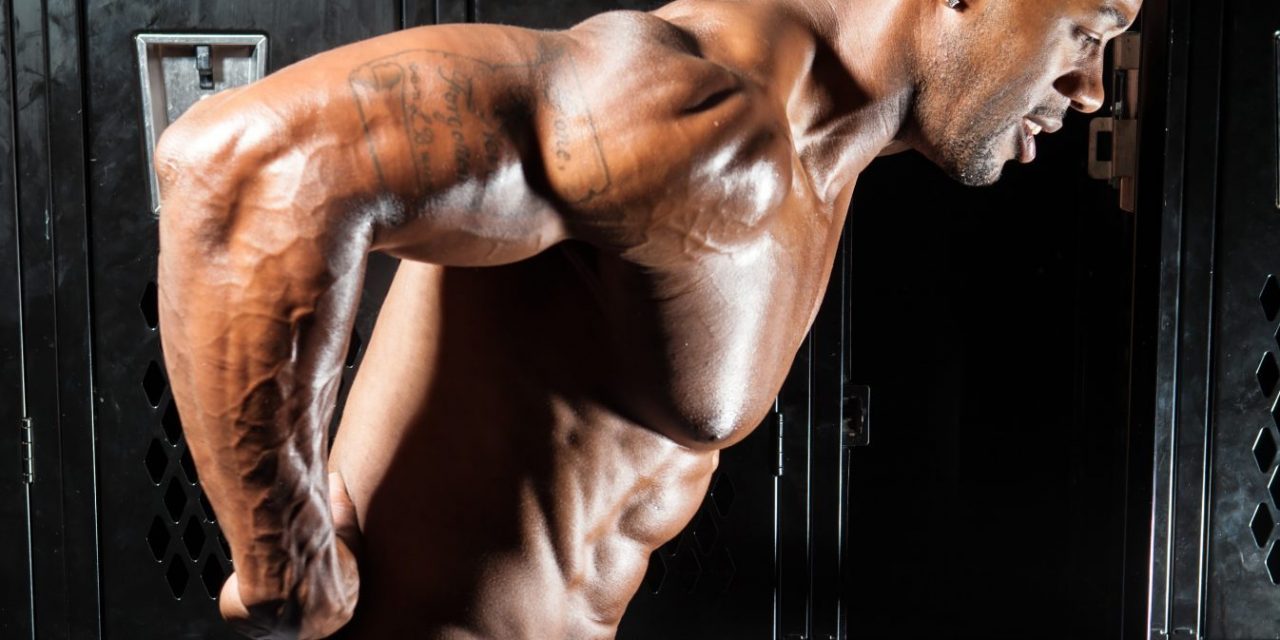
Treating LBP: Extension vs. Flexion

A couple of years ago, I attended a McKenzie Lumbar Spine certification class. As a lifetime proponent of Flexion Distraction technique, I was skeptical of anything that challenged my years of experience. I must admit, since incorporating McKenzie technique into daily practice, my results have improved- and I still have a use for my flexion distraction tables. I hope you will enjoy the following synopsis of McKenzie technique.
McKenzie Mechanical and Diagnosis Therapy employs a unique assessment technique that has shown the greatest validity and reliability. (1) The McKenzie assessment first classifies back pain patients into one of three distinct categories: “postural”, “dysfunction”, and “derangement” based on repetitive end range loading strategies. “Postural” syndromes are thought to result from irritation to joints, muscles, and tendons from prolonged stressful postures. “Dysfunction” syndrome implies the subsequent development of myofascial adhesions or adaptive muscular shortening. “Derangement” is by far the most common of the three mechanical syndromes that presents clinically. (2,3)
“Derangement” suggests displacement of any spinal tissue. Potential mechanisms include facet joint dysfunction, loose bodies, and capsular impingements, but the disc is the principal culprit. The process of disc derangement begins when repetitive mechanical stressors, like compressive loading, shear stress, and vibration weaken annular fibers, creating small circumferential annular tears. Tears may coalesce and create radial “channels,” allowing migration of the nucleus toward the area of least pressure. (4) In the case of a “deranged” disc, a portion of the nucleus may migrate into a radial fissure, thereby applying additional stress to the surviving outer annular fibers. (5,6)
Only the outermost annular lamellae are innervated, so early derangements may be asymptomatic. As radial tears grow, displaced nuclear material may begin to deform the highly innervated outer annular fibers producing either sudden or gradual onset complaints. This will generally present clinically as short-lived episodes of acute low back pain following activity or sustained postures. Patients report increased symptoms with movement, and some degree of disability may be present. Patients may adopt an antalgic posture. Rapid or spontaneous recovery is characteristic of early presentations. Over time, episodes become more severe and persistent. Significant annular disruption may lead to deformation of the disc with potential neuroforaminal encroachment and radicular complaints. Radicular complaints may move proximally or distally based on posture and activity. Pain may be constant or intermittent and may switch from side to side. Rupture of the outer annular fibers may allow herniation or displacement of a sequestered disc fragment. Inconsistency and change are characteristic of disc derangement. (3)
The classification of a derangement is determined by how symptoms respond to the application of end range loading. (i.e. flexion or extension). Movement in one direction makes the problem worse, while the opposite direction provides relief. (3,7) The clinical hallmark of this diagnostic classification is the ability of symptoms to worsen (peripheralize) or improve (centralize) with specific movements. Centralization is the retreat of radiating complaints in a proximal direction, while peripheralization describes an increase or progression of distal symptoms. Centralization suggests recovery, while peripheralization indicates that the condition is being aggravated.
The change in the patient’s symptom intensity and location in response to repeated end range loading is a useful diagnostic and treatment tool. (3,8-15) The phenomena of centralization and peripheralization have been shown to closely correlate with discography studies. (16) While the concept of directional preference is often associated with treatment of disc lesions, this classification of low back pain is not specific to any single diagnosis and may be useful for stenosis, degeneration, spondylolisthesis, facet syndrome, intersegmental joint dysfunction, and others.
The patient’s history may provide significant clues for determining a directional preference. The identification of someone who may be a responder to directional preference can often be determined by asking the correct questions during the history, i.e. “do you have difficulty straightening up after sitting?” Patients who are “extension-biased” prefer extension (standing) and often report pain on flexion-inducing activities (sitting, bending, and leaning forward). “Flexion-biased” patients, in contrast, prefer flexed postures and report increased symptoms with extension-inducing movements.
Clinicians may choose to begin directional preference testing in either flexion or extension, based on the patient’s history. In cases where the history is ambiguous, clinicians may choose to begin testing in extension, as the majority of patients demonstrate an extension bias with only 7-10% of patients requiring flexion. (2)
Clinicians will test for a directional preference by having the patient perform repeated end range movements in either extension or flexion while monitoring for centralization or peripheralization of symptoms. (3,11) Testing, like treatment, will begin with the least likely irritant and increase in a stepwise fashion until symptoms change (force progression). Assessments begin with the patient standing and progress to a recumbent posture.
Extension testing progresses through the following stages:
- standing extension
- lying prone,
- lying prone while propped up on the elbows
- lying prone while propping up on extended arms,
- performing repetitive extension, 1-5 sets of 10 repetitions or until symptoms change
- performing repetitive extension while the clinician applies a downward stabilizing force over the affected vertebral level.
Assessment begins with a single repetition (in extension or flexion) with careful observation of muscle strength and movement loss. The assessment progresses into end range loading of 10 repetitions of the same movement. Multiple sets may be performed, if needed. The patient should be advised to “touch the pain” when performing movements. Local discomfort is acceptable and non-contributory, but patients should immediately discontinue movements that cause peripheralization of symptoms. Clinicians should observe for and correct thoracolumbar restrictions, which may impair full extension.
Centralization of the patient’s complaint following repetitive end range loading confirms a directional preference and is the culmination of the test. Finding a direction of testing that centralizes or abolishes the patient’s complaints defines their “directional preference” for treatment. (3,18) The opposite repeated movement is likely to produce or intensify radiating symptoms.
Patients whose symptoms do not change with extension testing should then be tested in flexion and vice versa. Flexion based testing progresses as follows:
- supine knee to chest maneuver
- standing forward flexion.
Once a directional preference identifies a movement that reduces or abolishes the patient’s symptoms, clinicians can prescribe treatment based on the same principle. Treatment of lower back pain based on a classification systems leads to faster recovery and reduced disability. (19) Exercises matching the patient’s directional preference may significantly and rapidly decrease pain, medication use, and disability. (20) Patients are required to perform home self-management exercises until their symptoms are abolished.
Exercise selection is begins with the least aggressive (and tolerable) exercise that is capable of centralizing symptoms. The possible progression of extension exercise is:
- prone position with the arms at the side,
- low McKenzie – the prone patient is propped up on their elbows in a “sphinx” position
- high McKenzie – the prone patient makes a “press-up” movement by straightening their arms while keeping their pelvis on the table. Self-applied overpressure may be performed by having the patient “look up”, or by forced exhalation. Alternately, patients may perform standing extension while using their hands to stabilize their pelvis while leaning backwards for 10 repetitions.
Exercises are performed consistently throughout the day, sometimes hourly. Patients should be cautious to avoid flexion and maintain their lumbar lordosis while changing positions. Patients may be advised to move throughout the day as “not to break an imaginary florescent light bulb duct taped to their head and spine”. Extension biased patients may benefit by using a “lumbar roll” when they are seated (i.e. car, workstation).
Patients demonstrating a flexion bias may progress on the following continuum:
- supine knee to chest exercises
- seated forward flexion and
- repetitive standing flexion
For any directional preference exercise, patients should be advised to only “touch the pain” and immediately discontinue any exercise that peripheralizes symptoms. Increased centralized pain does not suggest that the procedure is undesirable. Exacerbation of localized lumbar spine pain is common and acceptable, while exacerbation of radicular symptoms is a reason to discontinue that mode of treatment and reevaluate the directional preference. Advancing treatment positions (force progression) is necessary only for patients who fail to progress with less aggressive exercises.
The goal of most manual therapy is to restore movement and function, whether through stretching, mobilization, or manipulation. Directional therapy allows practitioners to achieve this goal in a safe and measured step-wise fashion. Force progression of in-office treatment begins with exercises, moving to mobilization, and ending in manipulation. Directional therapy may be appropriate when other more aggressive manual treatments are contraindicated. (20,21)
References
- McCarthy CJ, Arnall FA, Strimpakos N, et al. The biopsychosocial classification of non-specific low back pain: a systematic review. Phys Ther Rev 2004;9:17–30
- Donelson, R.; Silva, G.; Murphy, K.: The centralization phenomenon: Its usefulness in evaluating and treating referred pain. Spine, 1990; 15:211-5.
- McKenzie R, May S. The lumbar spine mechanical diagnosis and therapy. 2nd ed. Waikanae, New Zealand: Spinal Publications Ltd.,; 2003.
- Fazey PJ, Takasaki H, Singer KP. Nucleus pulposus deformation in response to lumbar spine lateral flexion: an in vivo MRI investigation. Eur Spine J 2010; Mar 5
- Adams MA, Roughley PJ. What is intervertebral disc degeneration, and what causes it? Spine (Phila Pa 1976) 2006;31:2151–61.
- McKenzie R, May S. The lumbar spine: mechanical diagnosis and therapy. 2nd ed. Waikenae: Spinal Publications; 2003.
- Liebenson C. Pain, Activity Limitation, and Dysfunction: How Rehabilitation Can Help Dynamic Chiropractic – January 15, 1996, Vol. 14, Issue 02
- Donelson R, Silva G, Murphy K. The centralization phenomenon: its usefulness in evaluating and treating referred pain. Spine 1990;15(3): 211–3.
- Donelson R, Aprill C, Medcalf R, Grant W. A prospective study of centralization of lumbar and referred pain: a predictor of symptomatic discs and anular competence. Spine 1997;22(10):1115–22.
- Karas R, McIntosh G, Hall H, Wilson L, Melles T. The relationship between nonorganic signs and centralization of symptoms in the prediction of return to work for patients with low back pain. Phys Ther 1997;77(4):354–60.
- Long A. The centralization phenomenon: its usefulness as a predictor of outcome in conservative treatment of chronic low back pain. Spine 1995;20(23):2513–21.
- Sufka A, Hauger B, Trenary M, Hagan A, Lozon R, Martens B. Centralization of low back pain and perceived functional outcome. J Orthopod Sports Phys Ther 1998;27(3):205–12.
- Werneke M, Hart DL, Cook D. A descriptive study of the centralization phenomenon. A prospective analysis. Spine 1999;24(7):676–83.
- Werneke M, Hart DL. Centralization phenomenon as a prognostic factor for chronic low back pain and disability. Spine 2001;26(7): 758–65.
- Kopp JR, Alexander AH, Turocy RH, Levrini MG, Lichtman DM. The use of lumbar extension in the evaluation and treatment of patients with acute herniated nucleus pulposus, a preliminary report. Clin Orthoped 1986;202:211–8.
- Donelson R, Aprill C, Medcalf R, Grant W. A prospective study of centralization of lumbar and referred pain: a predictor of symptomatic discs and anular competence. Spine (Phila Pa 1976) 1997;22:1115–22.
- Wetzel and R. Donelson The role of repeated end-range/pain response assessment in the management of symptomatic lumbar discs/ The Spine Journal 3 (2003) 146–154
- Fritz JM, Delitto A, Erhard RE. Comparison of classification-based physical therapy with therapy based on clinical practice guidelines for patients with acute low back pain. Spine. 2003;28:1363–1372.
- Long A, Donelson R, Fung T. Does it matter which exercise? A randomized control trial of exercise for low back pain. Spine 2004;29(23):2593–602.
- Werneke MW, Hart DL, Cutrone G, Oliver D, McGill T, Weinberg J, Grigsby D, Oswald W, Ward J. Clare, H.A.; Adams, R, Maher C.G. Association between directional preference and centralization in patients with low back pain. J Orthop Sports Phys Ther. 2011 Jan;41(1):22-31

















